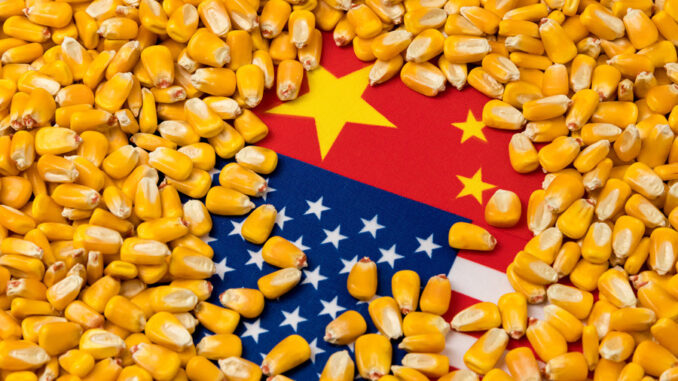by Judith Bergman, GATESTONE • August 19, 2022
- The more US agricultural technology China acquires, especially through theft, in order to become dominant in the agritech field, the worse the US will fare when it comes to selling its own technology, whether to China or third countries.
- The specific goal is for China to be able to satisfy 95% of its demand for agricultural machinery with equipment that is manufactured in China. According to the USCC report, those policies, underpinned in part by technological theft, have negatively affected US exports to China of agricultural equipment….
- China has been expanding its ownership of US land over the past decade from 13,720 acres in 2010 to 352,140 acres in 2020, according to the U.S. Department of Agriculture (USDA).
- China’s largest purchase in the US agriculture sector so far has been Smithfield Foods in 2013, the largest pork producer in the US. China’s WH Group — a state-owned company, which began as a meatpacking business in China — owns it today. At the time of the sale, Smithfield had 25 U.S. plants, 460 farms, and contracts with 2,100 producers in 12 states and the ownership of Smithfield accounted for more than 146,000 acres of US land.
- “While China’s main interest in obtaining GM seeds from the United States is in improving its crop yields, the potential weaponization of agricultural IP is possible,” the USSC warned. “… Similar to hacking a computer code, Beijing could easily hack the code or DNA of U.S. GM seeds and conduct biowarfare by creating some type of blight that could destroy U.S. crops… a virus or fungus engineered to kill a GM plant could wipe out an entire crop…” — U.S.-China Economic and Security Review Commission, Staff Research Report, May 26, 2022.
 <
<
>
The more US agricultural technology China acquires, especially through theft, in order to become dominant in the agritech field, the worse the US will fare when it comes to selling its own technology, whether to China or third countries. (Image source: iStock)<
>
<
>
The U.S.-China Economic and Security Review Commission (USCC) recently warned that China’s interest in the agriculture of the United States poses both a serious economic challenge and a security risk to the United States.
China sits on 7-9% percent of the world’s arable land, 294 million acres, but is home to nearly 20% (1.4 billion in 2020) of the global population (nearly 8 billion in 2022). By comparison, the US has more than 375 million acres of arable land and a population of 329.5 million.
China has sought to resolve its dilemma of achieving food security by buying up farmland and agricultural businesses abroad on a huge scale, including in the United States, and by seeking to advance its own agricultural technology, including through theft of US agricultural technology.
“The Chinese government’s domestic efforts, however, are not enough to solve China’s problems, “the USSC report noted.
<
>
<
>



These three Asian countries form an effective counterweight to China in every area other than nuclear weapons. Supposedly, US nuclear power provides that, as well as great strategic depth. In my opinion, a Chinese kinetic strike at this time against Taiwan would be very damaging, but suicidal. I don’t expect Xi to go this route this year, even as China’s economy collapses.
352,140 acres is 550 Sq. mil., or 15 Midwestern townships, or a typical Midwestern county. Hong Kong is 635 sq. mi. (land area).